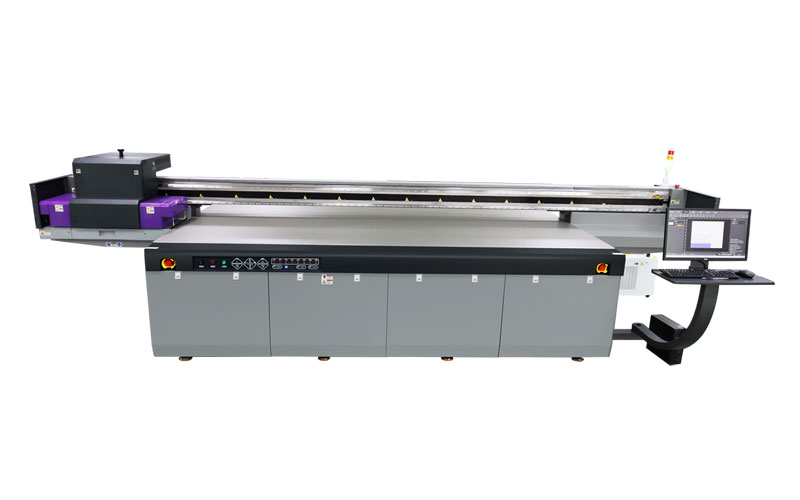Technical Challenges in UV Flatbed Printing and How to Overcome Them
Technical Challenges in UV Flatbed Printing and How to Overcome Them
UV flatbed printing has revolutionized the printing industry, offering versatility, speed, and high-quality prints on a wide range of materials. This technology uses ultraviolet (UV) light to cure ink instantly, resulting in durable and vibrant prints. However, like any advanced technology, UV flatbed printing is not without its challenges. In this article, we will explore the technical challenges faced in UV flatbed printing and discuss strategies to overcome them.

1. Ink Adhesion and Curing Issues
One of the primary challenges in UV flatbed printing is ensuring proper ink adhesion and curing. UV inks need to cure quickly under UV light to achieve the desired hardness and durability. However, achieving consistent curing across different materials can be difficult due to variations in surface energy, porosity, and temperature.
Solution: To overcome adhesion and curing issues, it is crucial to select the right ink for the specific substrate being printed. Manufacturers offer a range of UV inks designed for different materials, such as plastics, glass, metal, and wood. Conducting tests before starting a print job can help determine the best ink for optimal adhesion and curing.
Additionally, controlling the UV light intensity and exposure time is essential. Adjusting these parameters according to the ink type and substrate can significantly improve curing results. Using UV lamps with higher irradiance levels can also speed up the curing process and enhance ink adhesion.
2. Print Bed Temperature Management
Maintaining a consistent print bed temperature is critical in UV flatbed printing. Temperature variations can affect ink viscosity, curing speed, and overall print quality. If the print bed is too cold, the ink may not cure properly, leading to smudging or poor adhesion. On the other hand, if it’s too hot, the ink may cure too quickly, causing cracking or brittleness.
Solution: Implementing a temperature-controlled print bed is essential to overcome temperature-related challenges. Many modern UV flatbed printers come equipped with heated print beds that can be adjusted to maintain a consistent temperature throughout the printing process. Monitoring and adjusting the print bed temperature before each print job can help ensure optimal printing conditions.
3. Print Head Maintenance and Calibration
UV flatbed printers rely on precision print heads to deliver ink accurately onto the substrate. However, print heads can become clogged or misaligned over time, leading to reduced print quality and increased downtime for maintenance.
Solution: Regular maintenance and calibration of the print heads are crucial to overcoming this challenge. Manufacturers often provide guidelines for cleaning and maintaining print heads, which should be followed diligently. Using high-quality ink and filters can also help prevent clogging and extend the lifespan of print heads.
Furthermore, investing in printer models with advanced print head technology, such as those with automatic cleaning and calibration features, can significantly reduce maintenance requirements and improve overall print quality.
4. Color Management and Consistency
Achieving consistent color reproduction across multiple prints can be challenging in UV flatbed printing. Variations in ink viscosity, temperature, and substrate can all affect color output.
Solution: Implementing a robust color management system is essential to overcome color consistency challenges. This includes using color profiling software to create accurate ICC profiles for each substrate and ink combination. Regularly calibrating the printer and monitoring ink levels can also help maintain color consistency.
Additionally, using high-quality UV inks with consistent pigment dispersion can significantly improve color reproducibility. Investing in printer models with advanced color management features, such as those with automatic ink mixing systems, can further enhance color consistency.
5. Print Speed and Efficiency
While UV flatbed printing offers fast curing times, achieving high print speeds without sacrificing quality can be challenging. Faster print speeds may require higher UV lamp intensities, which can lead to increased ink consumption and potential overheating of the substrate.
Solution: Balancing print speed and quality requires careful adjustment of printer settings and UV lamp intensities. Conducting test prints at different speeds and UV intensities can help determine the optimal settings for a specific job.
Investing in printer models with advanced print speed control features, such as those with variable dot size technology, can also help improve print efficiency without sacrificing quality.
6. Environmental Considerations
UV flatbed printing presents unique environmental challenges, primarily due to the use of UV lamps and the potential for volatile organic compound (VOC) emissions from certain inks.
Solution: Adopting environmentally friendly practices is essential to overcoming these challenges. Using low-VOC or VOC-free UV inks can significantly reduce emissions and improve air quality in the printing environment.
Additionally, investing in energy-efficient UV lamps and printer models with low power consumption can help reduce the environmental impact of UV flatbed printing. Proper disposal and recycling of ink waste and printer components are also important considerations.
Conclusion
UV flatbed printing offers numerous advantages in terms of versatility, speed, and print quality. However, overcoming the technical challenges associated with this technology requires careful consideration of ink adhesion and curing, print bed temperature management, print head maintenance and calibration, color management and consistency, print speed and efficiency, and environmental considerations.
By implementing the strategies discussed in this article, printers can overcome these challenges and unlock the full potential of UV flatbed printing technology. With continued advancements in ink technology, printer design, and color management systems, the future of UV flatbed printing looks bright, promising even greater versatility and print quality for a wide range of applications.
